14 incredible creatures scientists have just found in the deep ocean - including many never seen before
The Okeanos Explorer set out from Pearl Harbor on July 31 on the second leg of this research journey.

This expedition explored the deep waters around the Papahanaumokuakea Marine National Monument in the Northwestern Hawaiian Islands. Throughout this summer and fall, the scientists plan to map 21,622 square miles of the seafloor that's never been looked at in such detail.
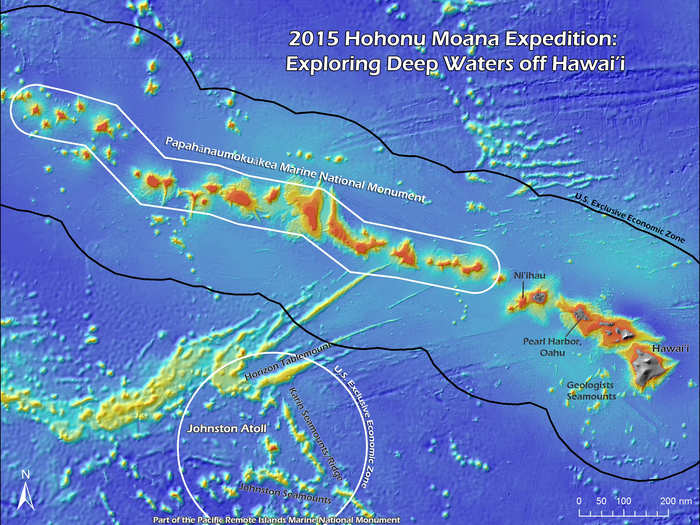
Deep Discoverer, a remotely operated vehicle (ROV), went on 18 dives during this trip for a total of 95 hours at the bottom of the Pacific Ocean, discovering countless marine creatures along the way.
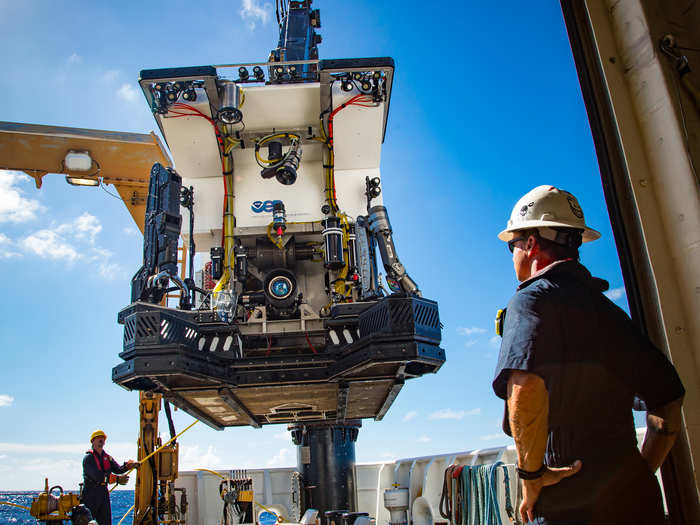
This is a stalked sponge. Sea sponges eat by filtering water and food through their porous bodies since they don't have nervous, digestive or circulatory systems.
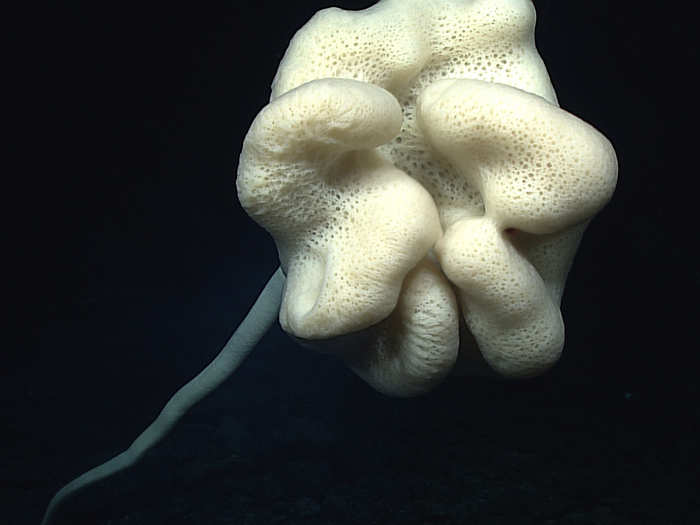
This is called a squat lobster, though it's more closely related to hermit crabs than the kind you eat for fancy dinner. It's over 9,000 feet deep in this photo.
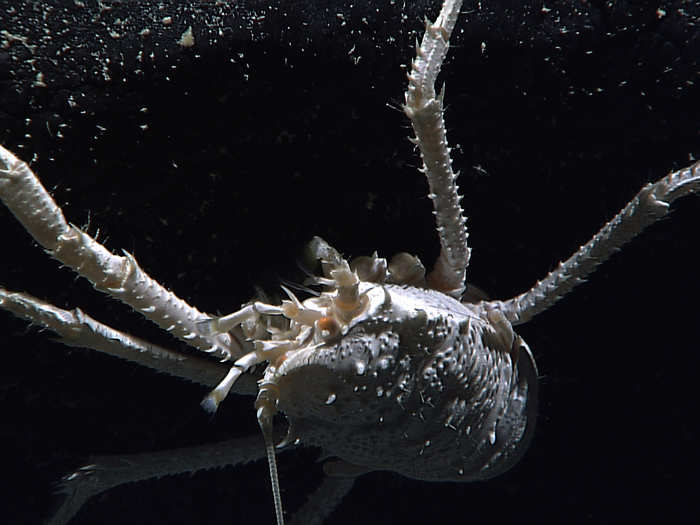
This creepy crawly creature is a polychaete worm. It was about 8 inches long, and was captured roaming at almost 3 miles deep.

This complex habitat is a deep sea sponge (in white) that up to thousands of anemones call home, in addition to the star fish and sea lilies. Even deep under the sea life can get pretty crowded!
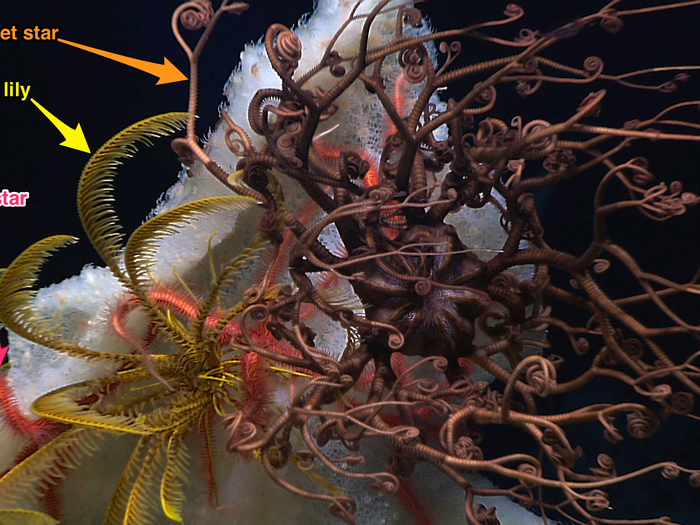
You can see this sea star's guts as it inverts them to digest a tasty bamboo coral.
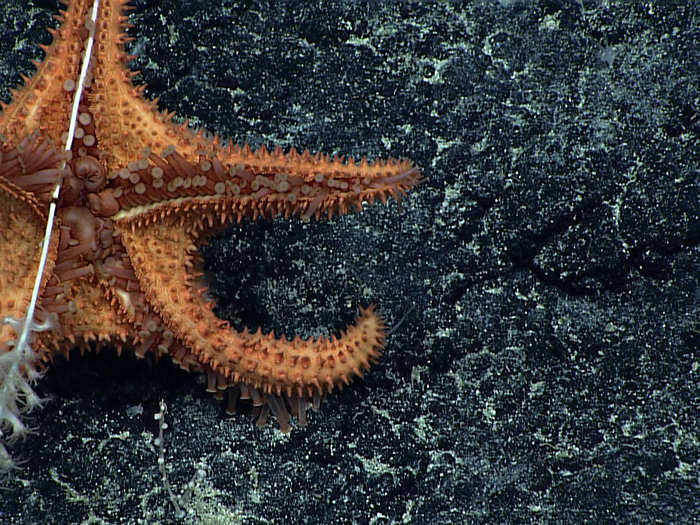
This majestic creature is an ophidiid fish filmed in the deep sea.

You can see this stalked sponge has tiny brittle stars living in it if you look closely.
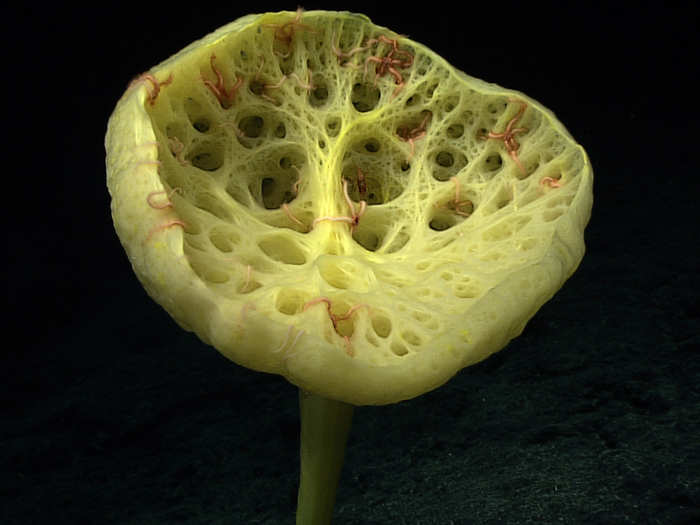
This is a gorgonian coral, the largest known deep sea coral. Its species can grow up to 20 feet.
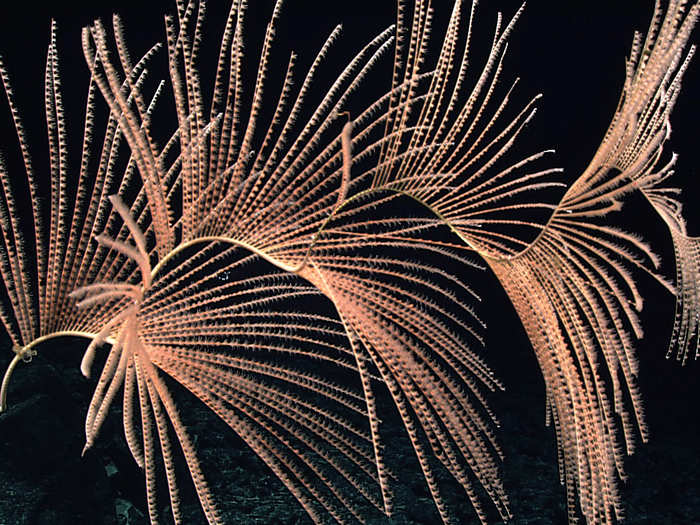
This deep-sea anemone was photographed off Pioneer Bank, a coral reef ecosystem that's rich in biodiversity.
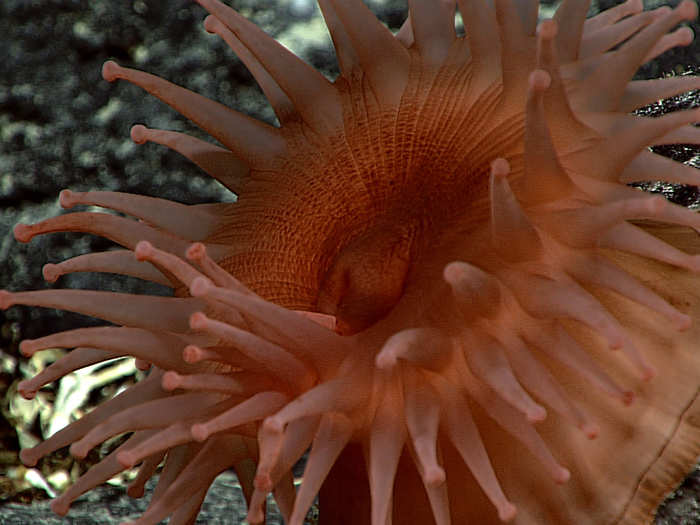
This was the first time this species of squid was filmed in its natural habitat. The only other two adults ever observed were dead — one was found floating and the other was caught in a fishing net. This one was found at a depth of almost 3,000 feet.

In the deep sea, sponges and corals, like the pink one seen here, are an important habitat for lots of species. This commensal brittle star sure appreciates having a home, since it benefits without affecting the sea coral.
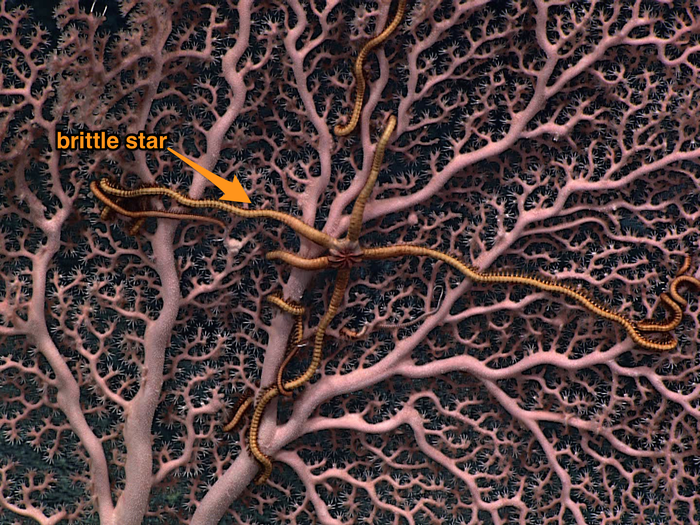
Though beautiful, this solitary hydroid is a deadly predator. It's closely related to jellyfish.
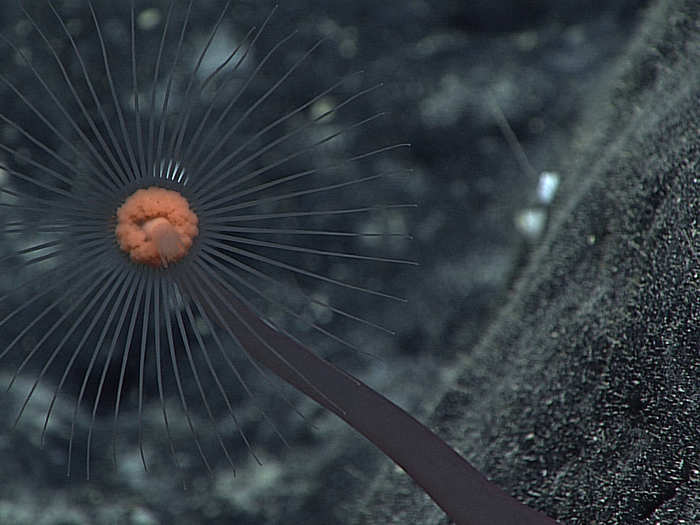
A deep-sea anemone provides a place to rest for a polychaete worm, which is one of the most common sea creatures. There are more than 10,000 species of polychaete.
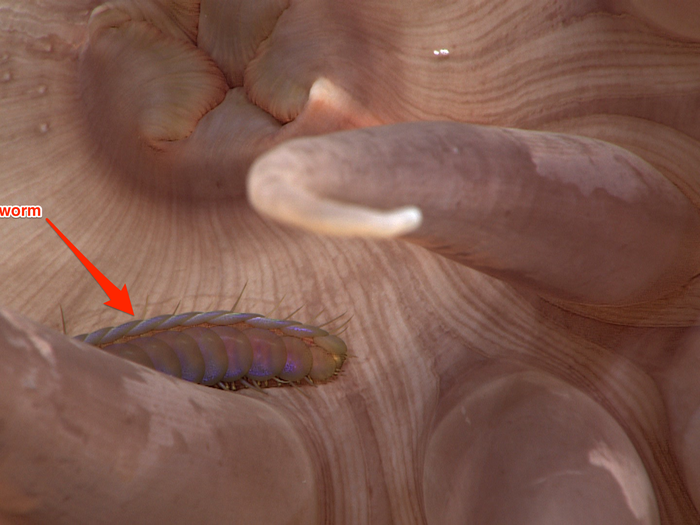
A long-legged shrimp perches on top of a glass sponge. The sponge is made of silica, the same material that's in glass, but it's not actually made of glass.
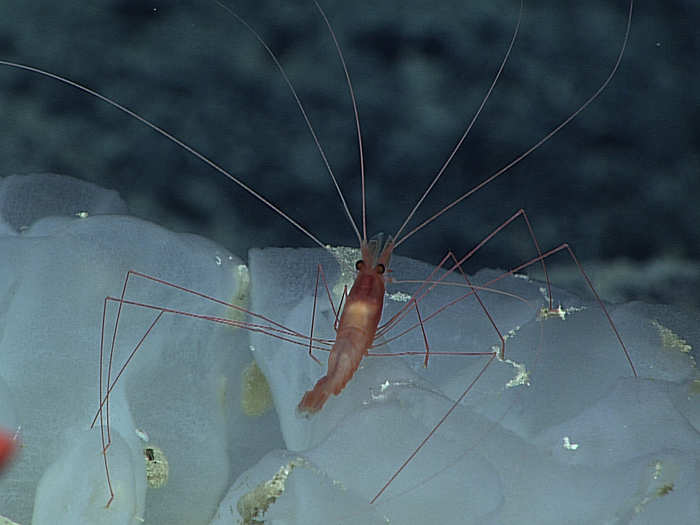
But the trip had to be cut short so the crew could rescue monk seal researchers who were in the path of Tropical Storm Kilo, which was forecasted to turn into a hurricane. The Okeanos Explorer was the closest ship nearby, even though it was a full day's journey away.
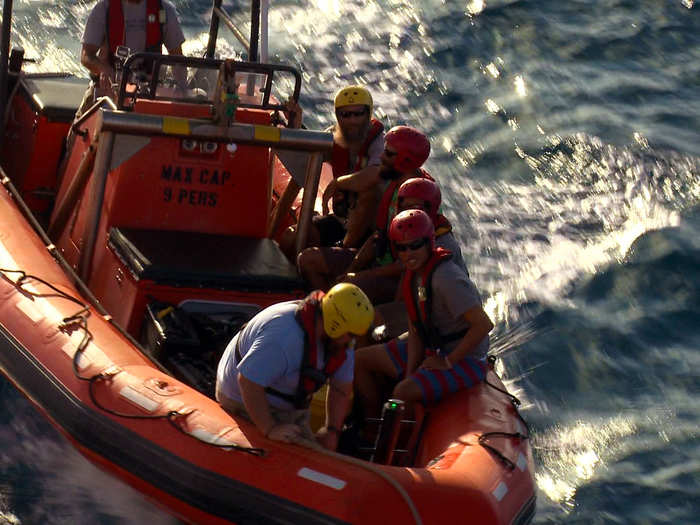
Everyone onboard, including the four rescued scientists, were safe and the Okeanos Explorer returned to Pearl Harbor on August 23 — seven days earlier than planned.
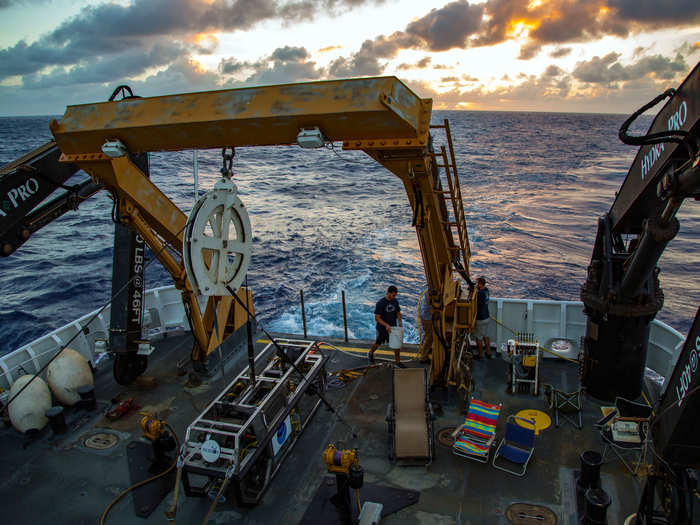
The Okeanos team has just set out to sea again on September 14, first stopping off the coast of Hawaii to pick up two probes that have been monitoring the water for the last couple years.
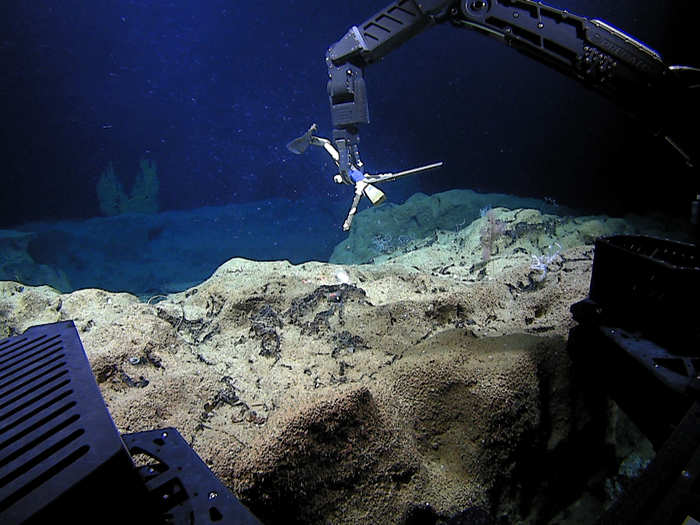
They also stopped to take samples of an unusual black coral, seen below hanging out with a sea star.
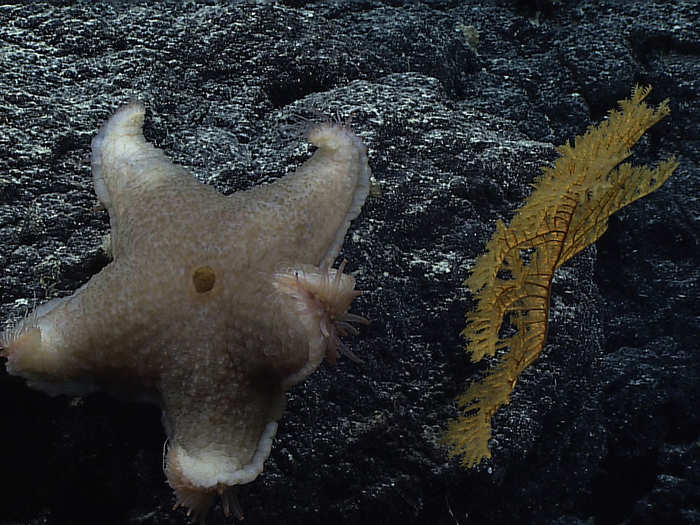
The explorers are currently making their way to the Hawaii island of Ni’ihau, and on to more deep sea exploration at Johnston Atoll, seen here in a satellite image.
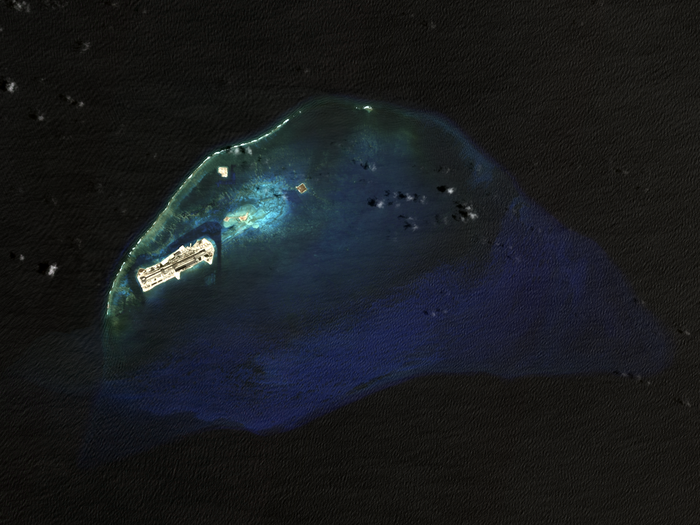
Popular Right Now
Advertisement